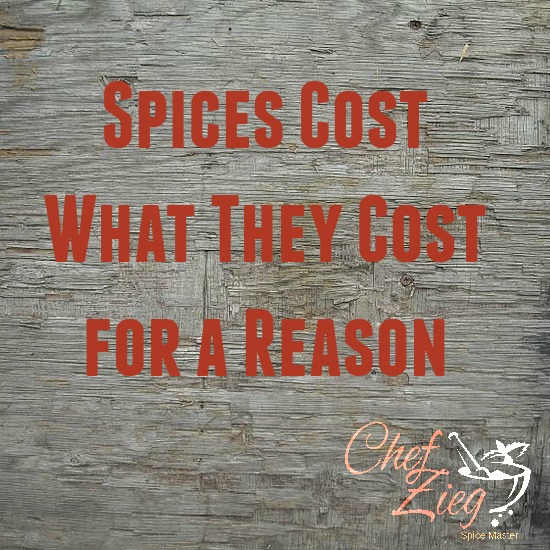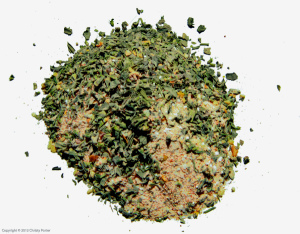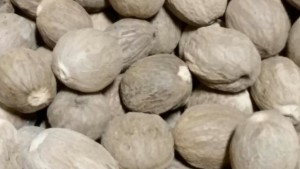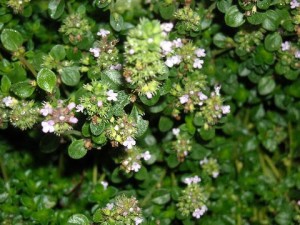
Spices Cost What They Cost for A Reason

 In all of my talks I focus on the cost of spices. Why? Because as a spice distributor, I’ve heard all the complaints and seen all the doubtful looks. Yes, spices and herbs can be expensive, but trust me when I say, “spices cost what they cost for a reason.”
In all of my talks I focus on the cost of spices. Why? Because as a spice distributor, I’ve heard all the complaints and seen all the doubtful looks. Yes, spices and herbs can be expensive, but trust me when I say, “spices cost what they cost for a reason.”
The reasons are great and varied, but here are some of the factors that influence the cost of spices and herbs.
Is the spice domestic or imported?
Every level of transportation will make the price higher.
What is the source country?
You can bet there are fees, tariffs, import and export duties and taxes that add to the cost of spices. On top of that, climate and micro-climate changes, agricultural practices and crop yields impact cost.
What is the political climate in the source country?
For example, Anise Seed, Cumin Seed and Aleppo Pepper are all grown predominantly in Syria, which has been involved in a civil war since 2011 and that is affecting the prices of each of these products worldwide.
How labor intensive is it to harvest the spices or herbs?
What kind of technology is required?
How old is the batch?
Some big companies give spices a five-year expiration. Some small companies don’t have the product rotation they need for premium quality. I say one year. Do you think the price on some spices might go down with age? This isn’t wine, folks.
Has the spice been filtered, sifted, ground, cut, processed or sterilized?
Extra processes cost money as well as transportation between multiple facilities!
How clean is the company’s facility?
Cleaning costs money. It’s also worth paying for.
Is there proper storage?
 Are temperatures maintained and controlled? Several companies offer delivery and order fulfillment from company vans. Is the climate always controlled in that van? In 2012, Denver had over 62 days with temps over 90 degrees — setting a new record. Do you think that might have affected the spice product in those oh-so-convenient delivery vans where the product is stored? How hot is your car in the summer?
Are temperatures maintained and controlled? Several companies offer delivery and order fulfillment from company vans. Is the climate always controlled in that van? In 2012, Denver had over 62 days with temps over 90 degrees — setting a new record. Do you think that might have affected the spice product in those oh-so-convenient delivery vans where the product is stored? How hot is your car in the summer?
Is your source harvesting the spices or working as a trader?
Who pays the middle man? How many levels are you away from the crop itself? Each level adds cost.
Is the spice a blend?
Some spice masters mix in cheaper spices or non-spice ingredients to create bulk in a blend. For example, I have never used salt as an ingredient in my Madras style Curry Powder. In comparison to others, my price may be 25% or greater – but the chef gets to add his or her own salt – typically the least expensive ingredient in many blends.
 What kind of overhead do you think your source has?
What kind of overhead do you think your source has?
Some spice companies employ chefs, researchers, scientists and others. Does your source provide a continuing commodity guarantee? This is a United States Department of Agriculture document that states the product is as it is labeled. Any reputable spices distributor will provide one.
***
Hopefully, you see by looking at this list that the cheapest spice is rarely the best spice. Do you really want to skimp on quality, safety and authenticity when it comes to flavor, especially flavors that affect 80+% of a restaurant’s menu items?
Spices cost what they cost for a reason. Your job as a buyer is to figure out what those reasons are or find someone you trust who can teach you about those reasons.




